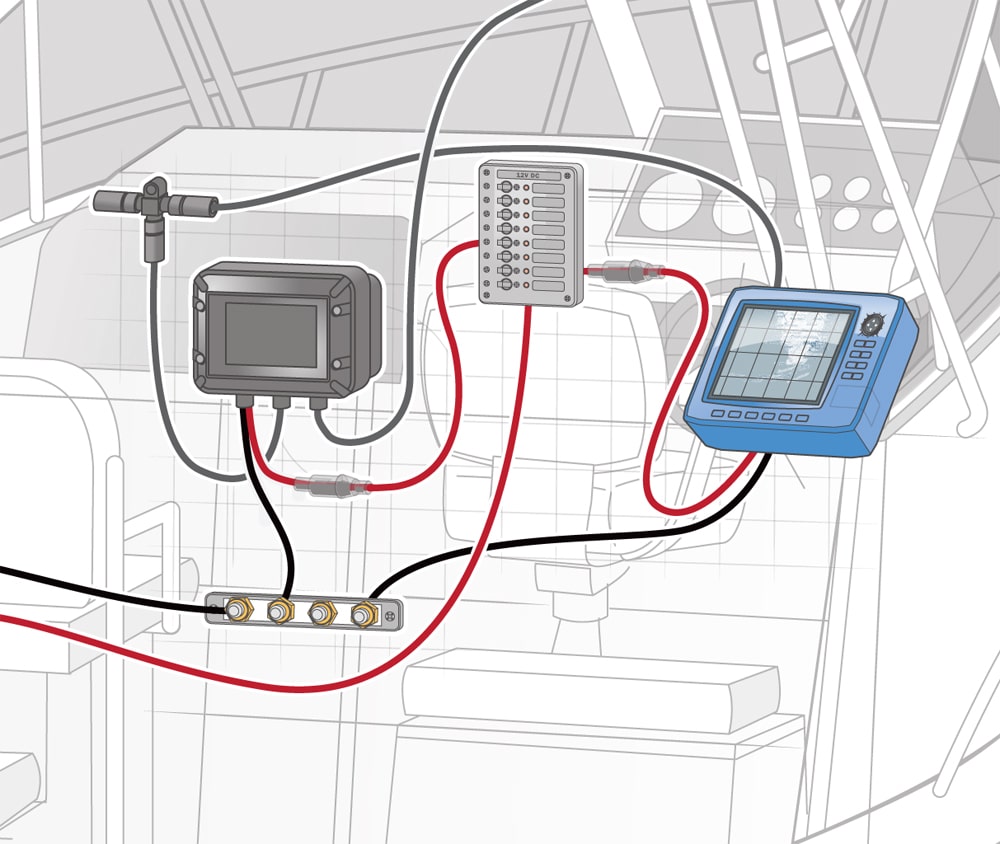
Integrating an AIS Receiver
An AIS (Automatic Identification System) receiver is essentially a black box that plugs into a chart plotter and lets you identify, locate and read important safety data about vessels and aids to navigation broadcasting AIS signals. There are a number of models from Furuno, Garmin, Icom, Raymarine and others. We chose the compact Si-Tex MDA-2 Metadata Dual Channel AIS receiver ($258.99, defender.com), which measures 5½ inches wide by 4 inches high by 1¾ inches deep.
Getting Started
Time to Complete: 4-5 Hours
Skill Level: 4/5
Tools and Supplies:
* AIS black-box receiver
* VHF antenna and ratchet-mount base
* NMEA 2000 T-connector ($19.95, thegpsstore.com)
* NMEA 2000 backbone cable ($24.95/6½-foot, thegpsstore.com)
* Two-circuit terminal block for NMEA 0183 connection ($3.89, westmarine.com)
* In-line 3-amp fuse
* Marine crimp-on ring terminals and butt connectors
* Cable clamps and tie-wraps
* Wire cutter
* Wire stripper
* Crimper
* Power drill and drill bits
* Screwdrivers
* Socket wrench set
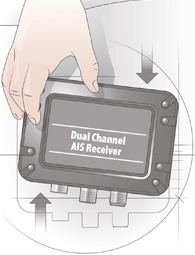
Choose a location where you can glance at the two indicator lights (green for power, amber for reception) and there’s room to route the NMEA network cable, power/accessory cord and antenna cable. We chose a cabin bulkhead inside the companionway. The unit can be mounted in any position but should be at least 20 inches from any compass. Use the four supplied stainless-steel screws to secure the unit. Boating Magazine
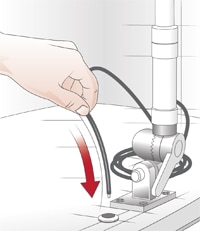
You need a VHF antenna for AIS reception. Companies such as Digital Antenna and Shakespeare offer optimized AIS antennas, but a standard VHF antenna will also work fine. We chose Digital’s 4-foot model 578-SW with 4.5 dB gain ($87.95, starmarinedepot.com), using a ratchet mount to lay it down for low bridges, trailering and storage. Route the cable to the AIS and attach the VHF plug. Go to step 3 or 4. Boating Magazine
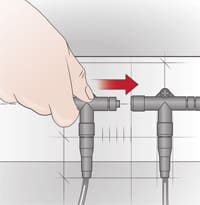
Using an NMEA 2000 backbone cable and T-connector is the simplest way to integrate an AIS unit with a chart plotter. Make sure the cable is long enough, and then route it from the AIS receiver to the onboard NMEA network connectors — a series of T-connectors usually located behind the helm. Insert a new T-connector and connect the backbone cable to the T-connector and the NMEA 2000 port on the AIS unit. Boating Magazine
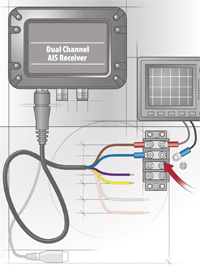
For an NMEA 0183 interface (as opposed to an NMEA 2000 connection), use a small terminal block to connect the transmit-positive and transmit-negative wires on the supplied power/accessory cable to corresponding wires on the chart plotter. Check the chart plotter manual to identify these receive-positive and receive-negative wires. Boating Magazine
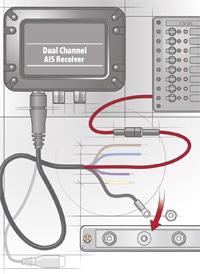
Route the positive wire with a 3-amp in-line fuse from the power/accessory cable and connect to a switchable 12-volt power source, such as the breaker switch for the marine electronics. Connect the negative wire to an onboard negative bus bar or other grounding source. Wait until all other connections are made before powering up the AIS. Boating Magazine
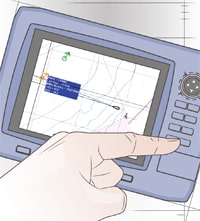
Power up the AIS and chart plotter, and access the plotter setup menu to display AIS data. Check the plotter manual for the proper steps. AIS vessel signals show as triangles and aids to navigation show as squares. Scroll over a symbol to read information such as a vessel’s Marine Mobile Service Identification (MMSI) number, vessel name, speed and course. Boating Magazine
Quick Tip
AIS signals are broadcast over line-of-sight VHF radio frequencies. So as with VHF radio, the taller the AIS antenna, the better the signal reception and the sooner you will see an AIS-broadcasting vessel on the chart-plotter display. However, remember that not all vessels are broadcasting AIS, and so it should not be used to replace, but rather to supplement, prudent navigational procedures.









